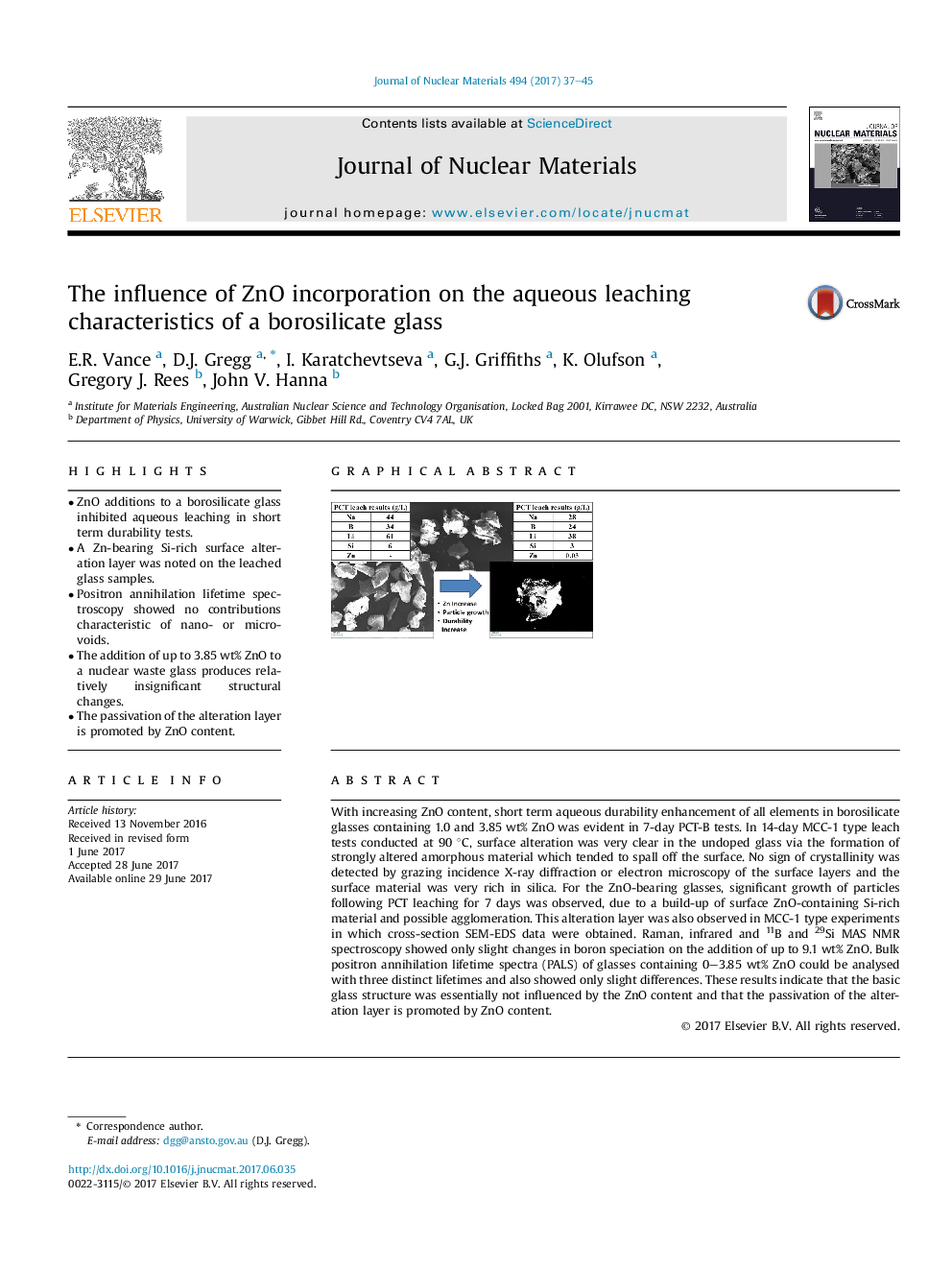| Article ID | Journal | Published Year | Pages | File Type |
|---|---|---|---|---|
| 5454074 | Journal of Nuclear Materials | 2017 | 9 Pages |
â¢ZnO additions to a borosilicate glass inhibited aqueous leaching in short term durability tests.â¢A Zn-bearing Si-rich surface alteration layer was noted on the leached glass samples.â¢Positron annihilation lifetime spectroscopy showed no contributions characteristic of nano- or micro-voids.â¢The addition of up to 3.85 wt% ZnO to a nuclear waste glass produces relatively insignificant structural changes.â¢The passivation of the alteration layer is promoted by ZnO content.
With increasing ZnO content, short term aqueous durability enhancement of all elements in borosilicate glasses containing 1.0 and 3.85 wt% ZnO was evident in 7-day PCT-B tests. In 14-day MCC-1 type leach tests conducted at 90 °C, surface alteration was very clear in the undoped glass via the formation of strongly altered amorphous material which tended to spall off the surface. No sign of crystallinity was detected by grazing incidence X-ray diffraction or electron microscopy of the surface layers and the surface material was very rich in silica. For the ZnO-bearing glasses, significant growth of particles following PCT leaching for 7 days was observed, due to a build-up of surface ZnO-containing Si-rich material and possible agglomeration. This alteration layer was also observed in MCC-1 type experiments in which cross-section SEM-EDS data were obtained. Raman, infrared and 11B and 29Si MAS NMR spectroscopy showed only slight changes in boron speciation on the addition of up to 9.1 wt% ZnO. Bulk positron annihilation lifetime spectra (PALS) of glasses containing 0-3.85 wt% ZnO could be analysed with three distinct lifetimes and also showed only slight differences. These results indicate that the basic glass structure was essentially not influenced by the ZnO content and that the passivation of the alteration layer is promoted by ZnO content.
Graphical abstractDownload high-res image (229KB)Download full-size image
